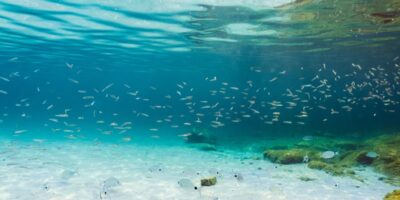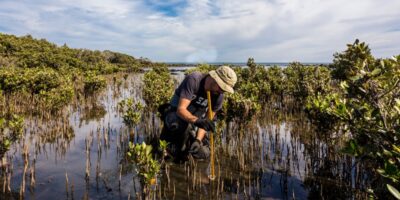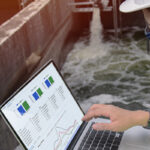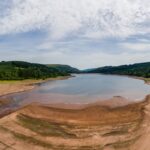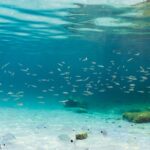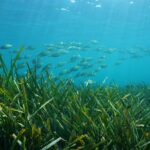Denmark doesn’t have much experience or guidelines on how best to implement nature restoration, so we’d better start gathering knowledge if we are to comply with the EU’s new Nature Restoration Act.
The European Parliament recently passed a new Nature Restoration Act that aims to ensure that 20% of Europe’s terrestrial and marine nature is restored by 2030. There has been some opposition to the bill in Denmark, and in the EU in general, particularly because of concerns about whether the law will hamper the green transition, food production and other use of, for example, the sea area. The Nature Restoration Act does not have to affect any of the above in any way. However, it does require that we begin to incorporate nature restoration to a greater extent than before in offshore and coastal activities. This is not something that has previously received much focus in Denmark, so we have a steep learning curve ahead of us.
I would therefore recommend that the Danish authorities now start defining principles and especially requirements for nature restoration in the Danish marine ecosystems, which are under great pressure.
Nature restoration is crucial to addressing both the biodiversity and climate crisis, and it should therefore be a natural part of the green transition and major infrastructure projects. Here we can learn from our European neighbours. In countries such as Germany, Poland and Sweden, there are already requirements for ‘replacement nature’ in connection with offshore and coastal construction projects, including the construction of new offshore wind farms.
However, Denmark does not have similar requirements for ecosystem restoration in connection with projects that have the potential to affect marine habitats. Therefore, we don’t really have any formal definitions and requirements for what a good marine nature restoration project looks like, even though knowledge is being built up in this area. Denmark also lacks formal requirements for how infrastructure projects can be used as leverage in the same context. However, we will need this very soon with the new Nature Restoration Act if development is not to be hampered. But how do we go about ensuring that we get the most positive impact on biodiversity for our tax dollars?
We do not have to choose between the environment and the economy
‘Replacement nature’ can be briefly explained as ‘the restoration or establishment of new nature to replace what has been lost’. This is where the first challenges arise: should nature be restored in the same place, or is it better for nature as a whole if new nature is established elsewhere? And what kind of nature?
For example, if a new offshore wind farm is to be built in the North Sea, should the disturbed marine habitats be restored when the wind farm is completed, or does it make more sense to designate another area of the North Sea for protection instead? Or does land have to be taken away before you can talk about replacement nature at sea? How do you weigh up the pros and cons of the different scenarios, and what does one cost compared to the other? And should the economy weigh more heavily than nature?
Until now, the Danish authorities have had a principle of choosing the cheapest bid in tenders for the construction and operation of offshore wind farms, but will this change when the EU Nature Restoration Act comes into force?
Sustainability and environmental requirements will have to be taken into account to an even greater extent than they are now. Here, you can help bidders along the way by introducing principles for the types of restoration projects that will be weighted heavily in the tendering process. Restoration that makes a real positive difference to the marine environment.
I have worked with the protection of aquatic environments and marine ecosystems for more than 20 years, and earlier this year, I helped organise a workshop at DHI on replacement nature at sea. The participants were researchers and employees from a developer of marine infrastructure projects, a contractor, an authority, NGOs and a consultant. DHI initiated the event because we experience a lack of Danish awareness and experience with replacement nature. At the same time, we find that everyone from NGOs to developers demand clear guidelines as well as requirements. In the workshop, we worked on what principles for replacement nature at sea could look like in connection with infrastructure projects, so that the positive effects on the environment are maximised without hampering development or setting unrealistic financial requirements.
There was broad agreement that it is first and foremost about not damaging marine habitats in connection with e.g. offshore infrastructure projects, and that it is natural to follow a mitigation hierarchy: i) avoid damage, ii) minimise/reduce damage, iii) restore damaged habitats locally and iv) restore damaged habitats in other locations (offsetting).
In addition, some of the main conclusions centred on the importance of ensuring that the planning of replacement nature is based on knowledge and data that support the intended function of the replacement nature and makes success in relation to, for example, the likely survival of eelgrass. And that there is ongoing monitoring to ensure that the implemented measures actually have the intended effect. In addition, it was discussed whether it would make sense to create the opportunity for replacement partnerships between public and private actors in order to combine smaller individual replacement projects into larger initiatives, where you get the most nature for your money. The conclusions from the workshop have been shared with relevant stakeholders to hopefully help set the framework for how best to create replacement nature at sea.
In Denmark, there are guidelines for replacement nature on land, but they don’t exist at sea, and I look forward to the new Nature Restoration Act helping to change this. If we get it right, we can make a positive difference for nature and at the same time accelerate the green transition and develop the Danish infrastructure in a sustainable way.
That’s why it’s crucial that we begin the work of setting the framework for restoration right now.
(This text was originally published in the Danish media Altinget Miljø. See the original here)


